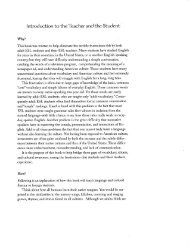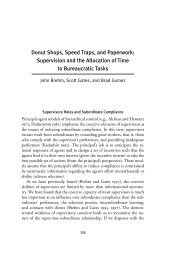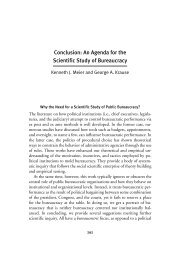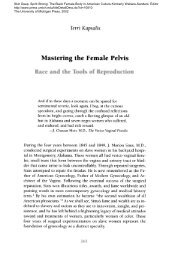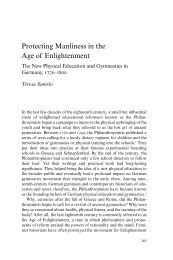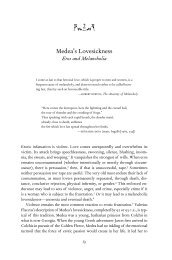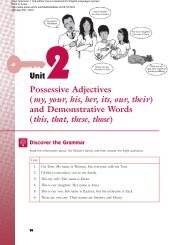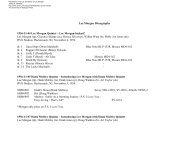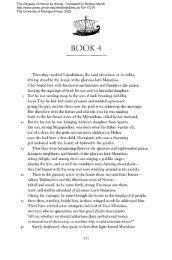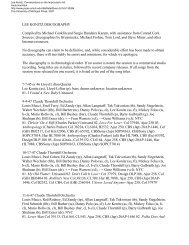Introduction - The University of Michigan Press
Introduction - The University of Michigan Press
Introduction - The University of Michigan Press
Create successful ePaper yourself
Turn your PDF publications into a flip-book with our unique Google optimized e-Paper software.
10 u.s. orientalisms<br />
American presences returned to haunt and question the cultural and<br />
political hegemony <strong>of</strong> the New World.<br />
Of course, the Orient here is not simply a displaced site <strong>of</strong> national<br />
racial issues. <strong>The</strong> encounter with the Orient works powerfully to articulate<br />
and shape national identity in terms <strong>of</strong> a youthful nation revitalizing<br />
the world with messages <strong>of</strong> liberty and virtue or in terms <strong>of</strong> a radical<br />
historical shift through which the United States becomes the newest<br />
seat <strong>of</strong> empire to which the Orient needs to turn. Of all the discourses on<br />
the Orient—political, economic, scientific—literary Orientalism most<br />
significantly challenges, even as it evokes, imperialist constructions <strong>of</strong><br />
national identity and <strong>of</strong> the Orient, as well as the racial hierarchies at<br />
home. In fields like phrenology and archaeology, Egyptomania and<br />
interest in the Near Eastern Orient produced massive phrenological<br />
studies supporting Caucasian superiority (such as Morton’s Crania<br />
Ægyptica). Yet Poe, during the same time, engaged in compelling critiques<br />
<strong>of</strong> Western imperial will in such stories as “Ligeia” and “A Tale <strong>of</strong><br />
the Ragged Mountains.” Similarly, such novelists as John DeForest and<br />
Maria Susanna Cummins both ridiculed and deployed the pretentious<br />
figure <strong>of</strong> the archaeologist venturing east.<br />
It should also not surprise us that these literary Orientalist works<br />
were heavily preoccupied with issues <strong>of</strong> gender and sexuality. Ideas <strong>of</strong><br />
empire and nation in the nineteenth century, as in the present, were<br />
raced, and racial distinctions <strong>of</strong>ten depended on gendered distinctions.<br />
For theorists <strong>of</strong> nationalism, nation and gender are <strong>of</strong>ten intimately<br />
related. Benedict Anderson’s connection between nation and gender is<br />
perhaps unwitting. Anderson states, “in the modern world everyone<br />
can, should, and will ‘have’ a nationality, as he or she ‘has’ a gender.” 29<br />
Although Anderson assumes that gender is an unproblematic category,<br />
something that everyone has, rather than a category that is constructed,<br />
his formulation also points to the hegemonic ways in which nation is<br />
gendered. George L. Mosse focuses on this latter aspect in the concept <strong>of</strong><br />
nation. <strong>The</strong> beginnings <strong>of</strong> modern nationalism in the late eighteenth<br />
century coincided with the Protestant revivals in Germany and Britain,<br />
leading to an alliance between nationalism and respectability, “an<br />
alliance that regarded control over sexuality as vital to the concept <strong>of</strong><br />
respectability.” 30 Deviance, aberrance, and excess were unnational,<br />
while respectability, normativity, and control were national. 31 Nationalism<br />
was increasingly associated with an ideal <strong>of</strong> asensual heterosexual<br />
manliness, and even though female national symbols were invoked,<br />
these were essentially static rather than dynamic. 32



